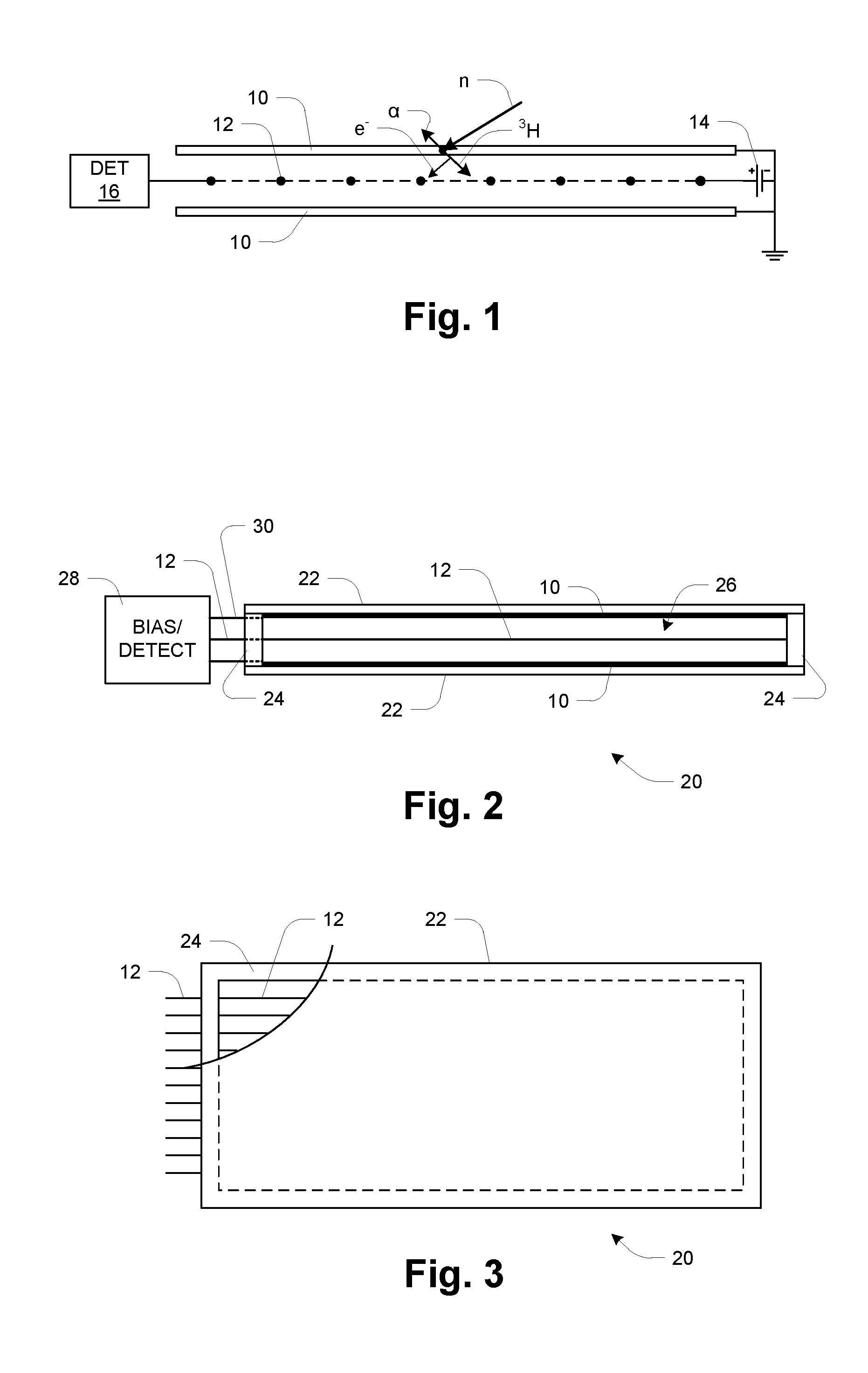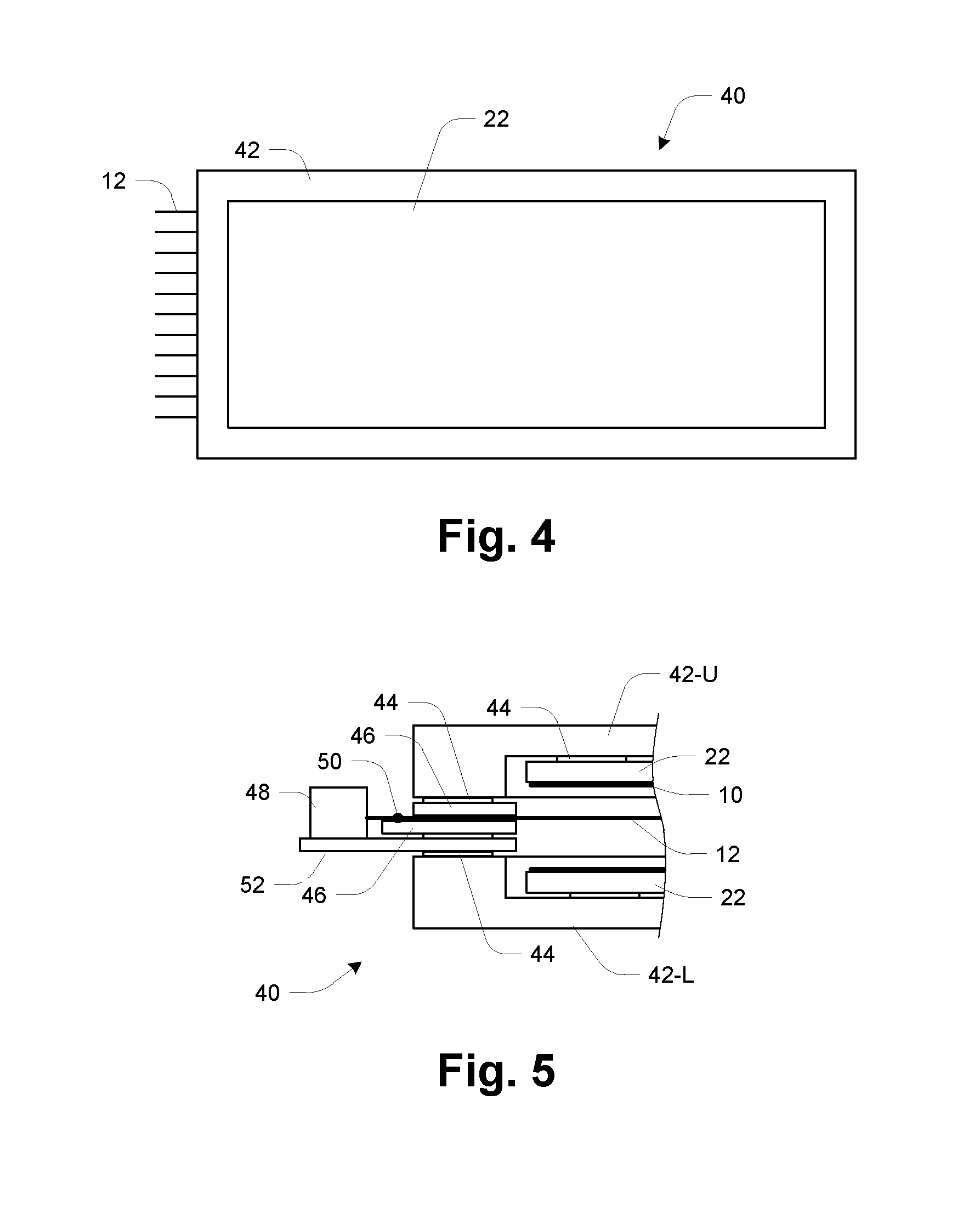Glass-panel lithium-6 neutron detector
a lithium-6 neutron and glass panel technology, applied in the direction of instruments, x/gamma/cosmic radiation measurement, material analysis, etc., to achieve the effect of convenient us
- Summary
- Abstract
- Description
- Claims
- Application Information
AI Technical Summary
Benefits of technology
Problems solved by technology
Method used
Image
Examples
Embodiment Construction
[0043]FIG. 1 is a schematic illustration of the detector and its operation. Two flat pieces of enriched lithium (6Li) metal foil 10 are placed a small distance apart (e.g., 1 cm), with a single element gas like argon between the foils 10. A plane of wires 12 is positioned in the gas-filled gap between the foils 10, the wires being spaced apart at a pitch on the order of 5 mm. The wires alternate from ground to high voltage anode collection wires 12a and 12b. This creates a more uniform field around each high voltage wire which provides for a shape for the signals generated from neutron interactions with the detector that is more distinguishable from noise and gamma ray induced signals. In the illustrated embodiment, the wires 12 are alternating ground wires and wires maintained at a high positive voltage, ranging from 750V to 1300V, with respect to the Li foils 10, such as by a high-voltage DC power supply 14.
[0044]In operation, thermal neutrons n strike the foils 10 and react with ...
PUM
 Login to View More
Login to View More Abstract
Description
Claims
Application Information
 Login to View More
Login to View More - R&D
- Intellectual Property
- Life Sciences
- Materials
- Tech Scout
- Unparalleled Data Quality
- Higher Quality Content
- 60% Fewer Hallucinations
Browse by: Latest US Patents, China's latest patents, Technical Efficacy Thesaurus, Application Domain, Technology Topic, Popular Technical Reports.
© 2025 PatSnap. All rights reserved.Legal|Privacy policy|Modern Slavery Act Transparency Statement|Sitemap|About US| Contact US: help@patsnap.com



